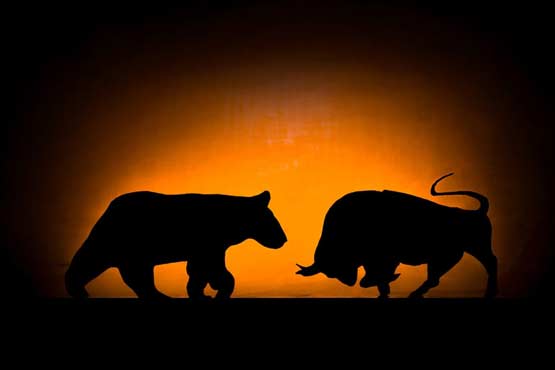 Bear and Bull Fight from Bigstock
Bear and Bull Fight from Bigstock
The stock market is looking wobbly. Thanks to worries about lackluster corporate earnings, plunging oil prices and weakness in
But dividends don't always protect you against the worst of a market drop. Consider
That being said, some dividend stocks have a better record than others. Here, we've identified nine such firms based on their performance during three hostile periods: the bursting-of-the-tech-bubble bear market, from 2000 to 2002, when the S&P 500 plunged 47.4%; the financial-crisis-related 2007-09 disaster, during which the index plummeted 55.3%; and the 2011 correction, a five-month period during which the S&P stumbled 18.6%, just shy of the 20% drop that typically defines a bear market.
These companies have products or services that consumers will pay for, even in a tough economy. Seven out of the nine stocks boast yields higher than the S&P 500's 1.9% payout. And eight of the nine companies derive the bulk of their sales in the U.S., leaving them relatively insulated from the negative effects of a powerful dollar (when the greenback strengthens, overseas profits translate into fewer dollars).
Abbott Laboratories
Share price:
Market capitalization:
Yield: 2.2%
Headquarters:
Down market total returns:
2000-02 bear market: 26.0%
2007-09 bear market: -11.6%
2011 correction: -2.8%
Health care needs are growing steadily, and
The Clorox Company
Share price:
Market capitalization:
Yield: 2.8%
Headquarters:
Down market total returns:
2000-02 bear market: 28.6%
2007-09 bear market: -22.9%
2011 correction: -6.6%
During a market downturn, stocks of companies that make essential consumer goods tend to do better than most. Clorox (CLX), which makes household cleaning and other supplies, is one of the best examples. The company owns category-leading brands, including its namesake bleach and Glad trash bags. As such, from 2008 to 2010, Clorox was able to increase sales by an average of 4.5% annually. The company also continued to raise its dividend, which it has upped every year since 1977.
Lately, competition has put pressure on core segments of the business, such as bleach, disinfecting wipes and cat litter. But Clorox has taken steps to roll out new products. Sales edged down by 0.3% in the fiscal year that ended in
Consolidated Edison
Share price:
Market capitalization:
Yield: 3.7%
Headquarters:
Down market total returns:
2000-02 bear market: 61.3%
2007-09 bear market: -25.6%
2011 correction: 10.8%
You won't have to worry about overseas exposure for
Rising interest rates could put pressure on the utility's stock, but
General Mills
Share price:
Market capitalization:
Yield: 3.0%
Headquarters:
Down market total returns:
2000-02 bear market: 34.8%
2007-09 bear market: -11.9%
2011 correction: -0.8%
Today,
Hormel Foods
Share price:
Market capitalization:
Yield: 1.9%
Headquarters:
Down market total returns:
2000-02 bear market: 59.7%
2007-09 bear market: -15.0%
2011 correction: -9.4%
During hard times, households eat more Spam, the precooked canned meat. That helps
The stock's yield isn't huge, but Hormel has raised its dividend for 49 consecutive years, including a 25% hike in November. One short-term negative: The stock trades at 21 times estimated earnings for the fiscal year that ends in October, near the high end of its range for the past two decades.
McCormick & Co.
Share price:
Market capitalization:
Yield: 2.2%
Headquarters:
Down market total returns:
2000-02 bear market: 71.5%
2007-09 bear market: -14.2%
2011 correction: -8.0%
When the going gets tough, smart investors spice up their portfolios with McCormick (MKC). Consumer purchases account for roughly 60% of sales at the giant spice maker. Food manufacturers and restaurants make up the rest, so even as fewer people eat out during hard times, demand from home cooks helps prop up business. For example, in the fiscal year that ended in
McCormick is not without its challenges. It faces increased competition from private-label firms, and a strong U.S. dollar could hurt results--overseas sales account for about one-third of total revenues. The stock trades at 20 times estimated earnings for the fiscal year that ends in November, compared with its average 10-year forward price-earnings ratio of 18, according to
Ross Stores
Share price:
Market capitalization:
Yield: 0.9%
Headquarters:
Down market total returns:
2000-02 bear market: 79.2%
2007-09 bear market: 10.1%
2011 correction: 4.3%
A bear market killer, Ross (ROST) is the only stock on our list that was in the black in each of the past three downturns, a remarkable accomplishment. Plus, Ross, the largest off-price apparel and home-goods chain in the U.S., is a pure domestic play. The company has been doing brisk business as budget-conscious consumers hunt for deals. Over the past decade, earnings have increased by an annualized 18.2%. And since initiating a dividend in 1994, Ross has boosted it every year.
Analysts at Canaccord Genuity, a Canadian investment bank, believe Ross's sales and earnings growth will start to slow in coming years. But lower gasoline prices could give Ross shoppers more spending power, and analysts on average still expect profits to climb a comfortable 10% in the fiscal year that ends in
Southern Company
Share price:
Market capitalization:
Yield: 4.0%
Headquarters:
Down market total returns:
2000-02 bear market: 137.9%
2007-09 bear market: -22.7%
2011 correction: 8.9%
Like
Wal-Mart Stores
Share price:
Market capitalization:
Yield: 2.2%
Headquarters:
Down market total returns:
2000-02 bear market: -4.0%
2007-09 bear market: 7.4%
2011 correction: -4.2%
Comment by clicking here.
Carolyn Bigda is a Contributing Writer at Kiplinger's Personal Finance.



 Contact The Editor
Contact The Editor
 Articles By This Author
Articles By This Author